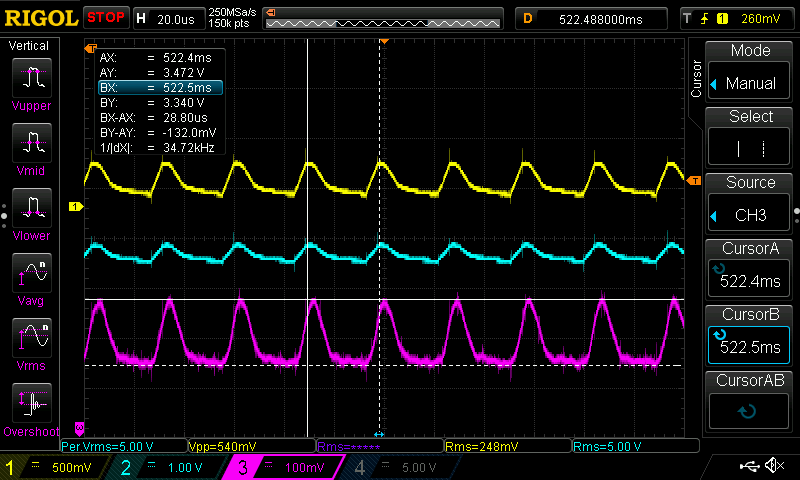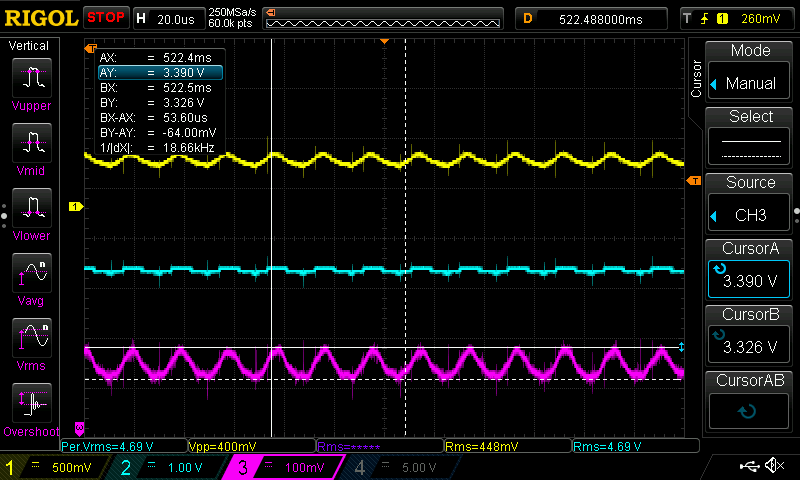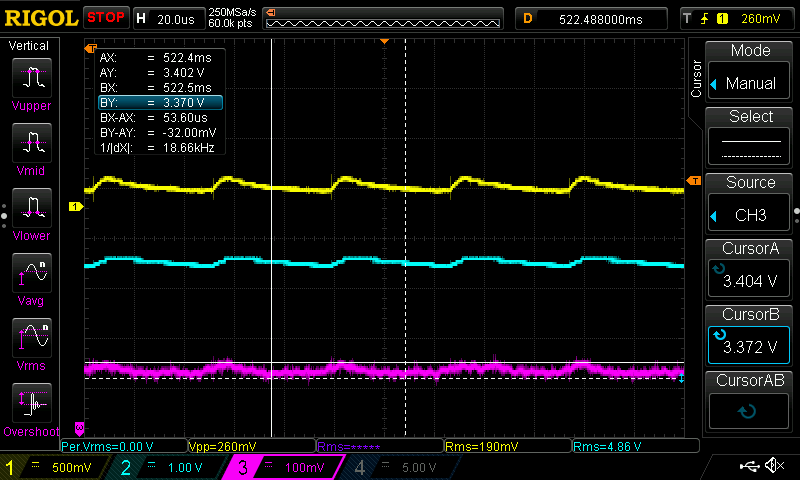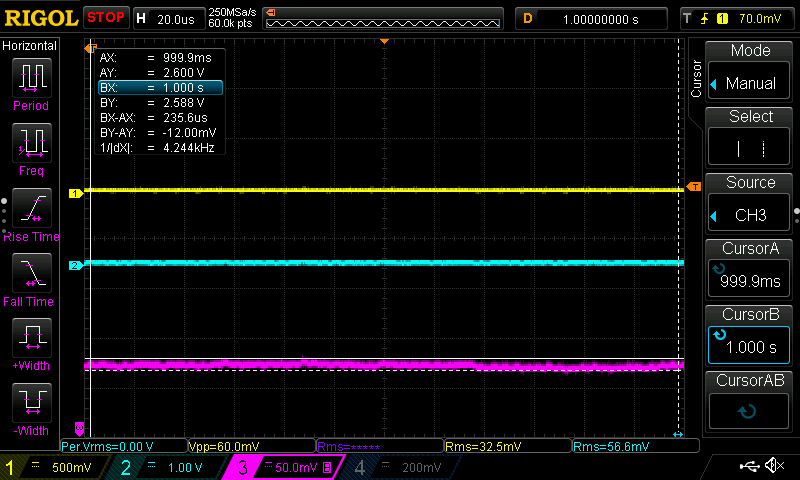The PM2.5 particulate sensor requires a 5V supply voltage. Supplying this 5V requires special consideration when the unit is powered by a 3.7V Lipo battery. Providing 5V of power with a 3.7V battery is accomplished using a type of switched-mode power supply called a boost converter. The boost converter used in this design is built around the ME2108 IC.
Switched-mode power supplies are notorious for injecting noise into circuits. I investigated this concern.
The purple trace in the scope capture below shows noise on the 3.3V rail -- measured as 132mV with a frequency of 34.7 kHz. As a quick test, I removed the boost converter -- the 3.3V rail noise dropped dramatically - this shows that the boost converter is a significant source of noise.

Many devices, including a noise-sensitive ADC is powered with the 3.3V rail. My first results with the ADC are not encouraging - I see unstable results from the ozone and NO2 sensors. I suspect that the switched-mode supply noise is contributing to the undesirable results.
The first mitigation step was to replace the 1N4001 diode in the USB/Battery selection circuit with a Schottky diode. A Schottky diode is recommended for this circuit. I found two types of Schottky diodes at our local Makerspace and chose the diode that reduced the noise the most.
Adding the Schottky diode produced measurable improvements - noise was approximately halved. Shown in the scope capture below.

Adding a 220uF electrolytic capacitor to the input of the boost converter produced more measurable noise improvements on the 3.3V rail. Apparently electrolytic capacitors are not the first choice capacitors for the input of boost converters (low ESR ceramic capacitors are preferred). However, the electrolytic capacitor reduced the noise on the 3.3V rail by an additional 50% , shown below.

Lastly, I added a high-side MOSFET switch to turn off the boost converter using a GPIO pin on the ESP32 microcontroller. The particulate sensor only needs to be powered-up on demand to make a periodic measurement. When the boost converter is switched off the noise on the 3.3V rail is reduced further.

These improvements are reflected in the latest V4 schematic release, link below.
 Mike Teachman
Mike Teachman
Discussions
Become a Hackaday.io Member
Create an account to leave a comment. Already have an account? Log In.